Giant Haystags.
Embarrassingly, ignoring that I’ve never had the opportunity to play Tempest 3000, Moose Life is the Yak game I’ve played the least of. Before this past few weeks, I’d played it hardly at all.
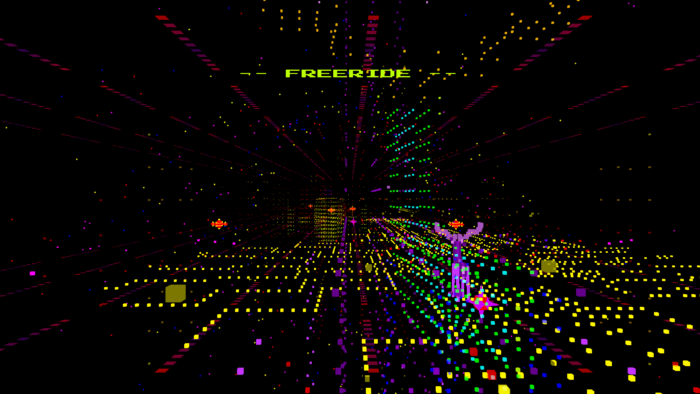
It’s not that I didn’t enjoy the quick blast I had on it at release (I was very excited about it), just between post lockdown depression (less about being in lockdown and more about getting a front row seat to how little the country was going to do about COVID) and my own and Em’s health being rough, I could barely muster the energy to play a videogame at length that I couldn’t just sleepwalk through at the time. Yep, even a Llamasoft one.
Looking back on my words at the time where I’m comparing the game to something like Devil Daggers and realising that oops, actually I was just exhausted, sorry.
Let’s try this again, from the top.
Donlan’s words were reassuring, as were James Cunningham’s. There was little chance of me not loving Moose Life when the two people I’m most likely to trust about a new Yak and Giles game were so complimentary. I just had to wait until I could dig in.
And so I waited. Life happened a lot and it took me much longer to get round to investing time in Moose Life than I’d anticipated. Still, two years is hardly the longest I’ve waited to play a videogame! Could be worse.
And you know what? It was absolutely worth the wait. Gosh, it’s the good stuff! (It’s also bloody difficult to screenshot but that’s another story entirely). I might have got a fair bit wrong in my initial excitement but I was at least right that it’s a really good game.
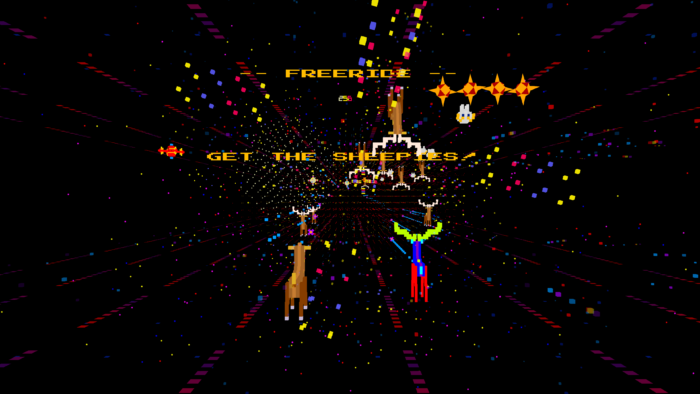
Repeating myself but: Moose Life is one of a handful of Llamasoft games designed (though not exclusively) for VR, the early eighties pure arcade experience but in/on your face. Regrettably, that particular element of the experience is something I can’t comment on as unfortunately my face tends to hurt from just wearing my glasses so wearing VR kit is totally not happening. Mildly gutted I’m unable to sample the game that way, gotta be honest. I can only imagine how exciting it must be to be inside a game like this.
Like the rest of Llamasoft’s recent work, Moose Life is aggressively arcade, violently VidKidz in its visuals. It wears a distinctive aesthetic that mashes up vintage arcade games, the messiness of 8 bit home computer games and today’s technology. I don’t think it’s exactly news at this point that I love that stuff! I may have mentioned it once or twelvety times before.
Jeff’s never been shy of admitting that he and Giles stand on the shoulders of giants – synthesizing the familiar with the uniquely Llamasoft – and the cavalcade of 80’s releases still stand as testament to Jeff being really fucking good at that stuff.
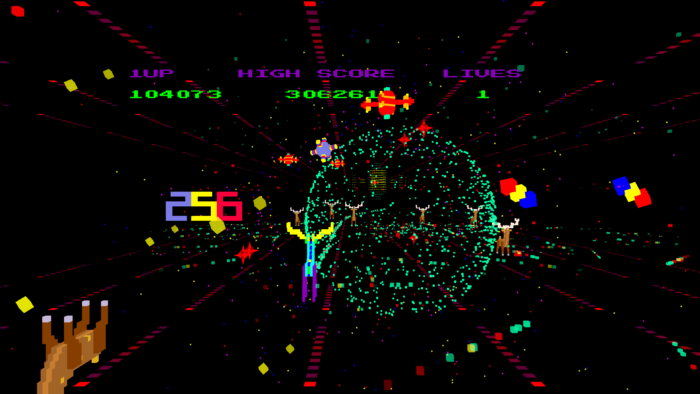
Since the old iPod Minotaur Project games it’s been fantastic watching Jeff and Giles really make this an aesthetic of their own and with each and every subsequent release, stretch it in all directions, explore it, perfect it.
(It’s such a rare thing to get to prod at this stuff in games because we usually burn people out long before they get to do this stuff, before they really get to bring all those years of graft, knowledge and experience to such personal games. We’re lucky in more ways than one that we somehow managed to keep Jeff in and around games, doubly so that Jeff’s talent could be equally met with Giles’ talent in co-authoring the more recent stuff. So please, indulge me a moment here).
T4k is honing the Llamasoft branch of Tempest to perfection, Polybius the great lost post-Blaster 2084 Vidkidz game that never could be, Akka Arrh a study in scoring and control. So what is Moose Life and where does it fit into all this?
I’ve been having a think about that and right now I’m settling on it being the game that belatedly bridges the gap between two eras of a career. I mean this in the most complementary fashion: it’s the Yak game that feels closest to the old 8 bit Llamasoft stuff in spirit.
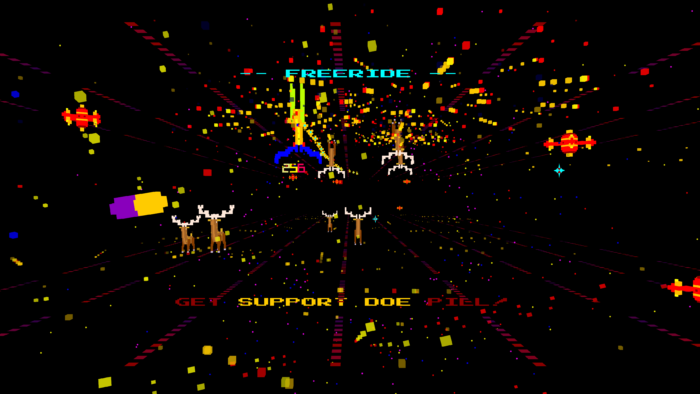
Not that this is entirely new ground. We’ve been here before, I think, with 2002’s Gridrunner++ (to my mind, the most confident and inspiring of the Gridrunner series of games). The little pocket PC game that sat between the grander console fare of 90’s Yak games and the equally grand in scale new-Llamasoft of Space Giraffe.
If you’ve never played Gridrunner++, you absolutely should go and do that now because it’s fantastic. It’s the game I constantly look to when writing my own stuff and one day when I grow up, I hope to be able to write something as good.
The thing about Gridrunner++ is it helps us draw a continuous line from the 8 bit Yak to the console Yak and back again. The progress, the honing of a personal style, you can see it all come together distinctively for the first time. What you’d later come to expect from a Yak game today is all present in Grirdunner++ – the ridiculous amounts of particles, exploding text, the Llamatron-esque cacophony of sound.
Not that any of this stuff is unexplored territory for Jeff by the time of GR++’s release but fewer commercial and hardware constraints help provide the space needed to refine it all into something distinctly, uniquely, Yak.
There’s no doubting Space Giraffe and (later) Gridrunner Revolution’s place in later helping refine the aesthetics and play though they both feel strangely out of sync. Instead of occupying a mid-career evolutionary ground it’s like they skip straight to the final chapters, fucking around at the extremes and coming up with gold there.
This is absolutely not a bad thing (they’re a pair of amazing games), it just kinda means the mobile Minotaur Project games that released a few years later, themselves heralding a return to more compact (not small!) works, aren’t so much hitting a reset switch as picking back up from where Gridrunner++ left off,
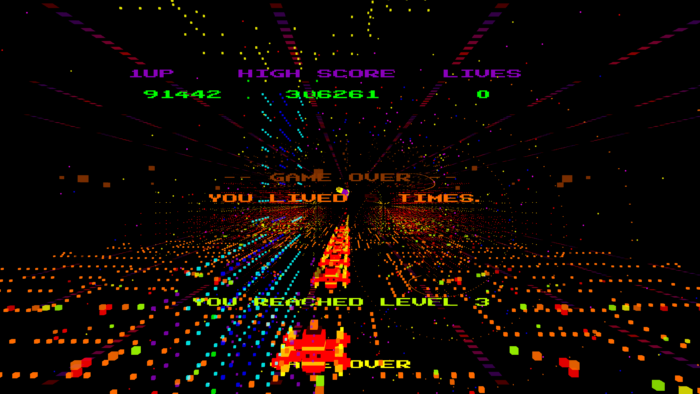
So it’s with all that in mind when I say it belatedly (emphasis on the belatedly, at that) bridges a gap. Moose Life is less a transitional work – which I hope should be obvious from the previous and later games – and more the missing piece of the puzzle, filling in a what if? we never got the opportunity to see.
It’s “what if you could just comfortably muck around like you did on the C64 or whatever except now you have all this experience and a partner to help?” and it’s all the more fantastic for being that, even if I’m fairly sure it’s cheating and very very rude to do it so well.
Ah yes, does Moose Life do it all so well. Moose Life is rather bloody brilliant! Like, you’d hope so after wading through this many words but it is! It absolutely is brilliant.
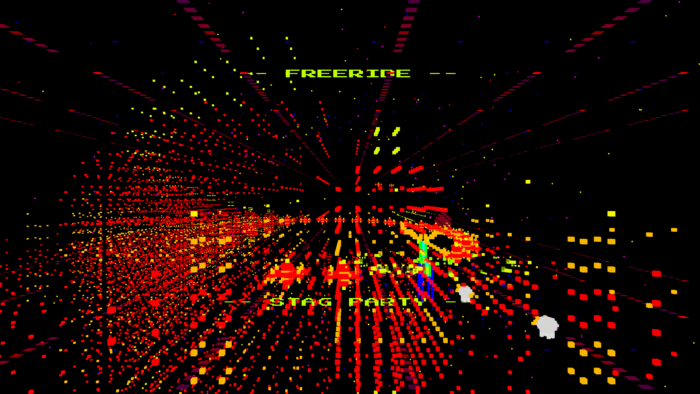
There’s a dash of Juno First to it, a dash more of Tube Panic, leaping between planes Ancipital/Batalyx style. I could probably pick out inspirations, threads and whatever else all day. (I already had a go when I first wrote about it and somehow came up with different ones, there’s a lot there!). For what appears to be a fairly straightforward blast, it doesn’t half wear its heritage and influences with pride, never pastiche
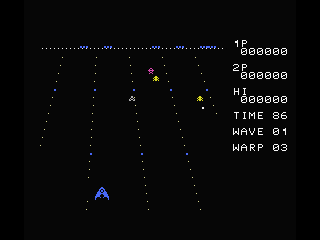
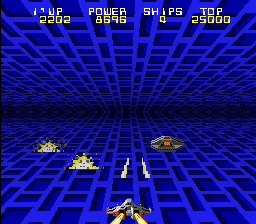
More than anything else though, it’s a shooter to kick back to, a game hyperfocused on the joy of flying through this three dimensional arcade space and exploding things.
It’s smartly designed to let the player never really have to think too hard about the game (unless they really want to), to not really stress about scores and feel any pressure, instead just lean in to the joy. Something I can only (enviously) imagine being amplified by it also working in VR.
That’s not to say things don’t get pretty full on, they absolutely do. The game is happy to let the player coast along with it for a fair old while regardless and if the player really can’t be bothered with the more traditional videogamey parts then the freeride mode exists and they can just keep on going without the game really caring.
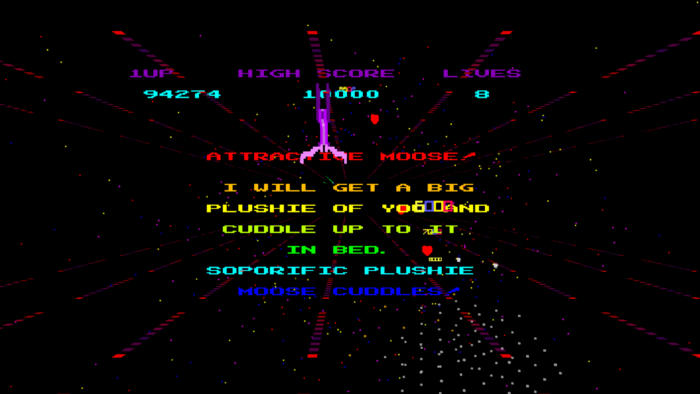
Whilst I think on! I’m a huge fan of freeride/tourism modes in games anyway. They’re great for accessibility reasons and I’d encourage their inclusion for that reason alone! An oft unsung bonus is that sometimes I just really want to admire a videogame for everything else it is, not just how it plays. I’ve always been like this and used pokes, multiface number tweaking, trainers and all that stuff. It’s why I love photo modes too (and jukeboxes and level skips and and and). I love the craft and graft people put in to make these things exist and just let me lose myself to that, yeah?
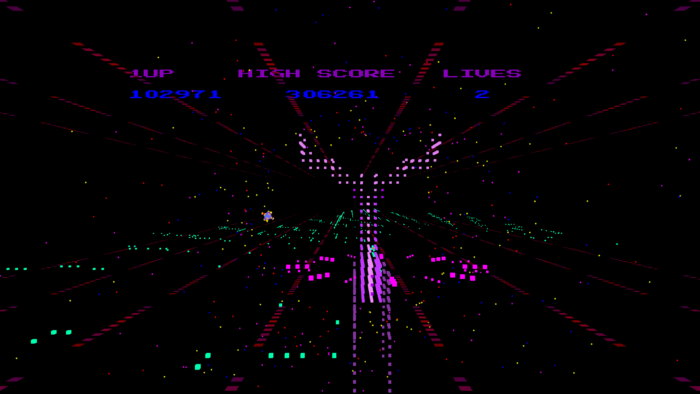
I’ve gone on long enough, I think. Visiting Moose Life a few years on and I’m quite made up with it. Time has given me the opportunity to see where it fits in the grander scheme of videogames, to calm my excitement and find a new, longer term, joy in it.
Most importantly to me, it cements my respect even further for the path Jeff and Giles tread in games. Arcade games are deceptively difficult things to get right and having a near 40 year run of great and/or fascinating ones is a remarkable feat.
I’ll forever be sad videogames rarely grants that opportunity to people here but equally, I’m damn grateful for the ones who stick it out regardless.
